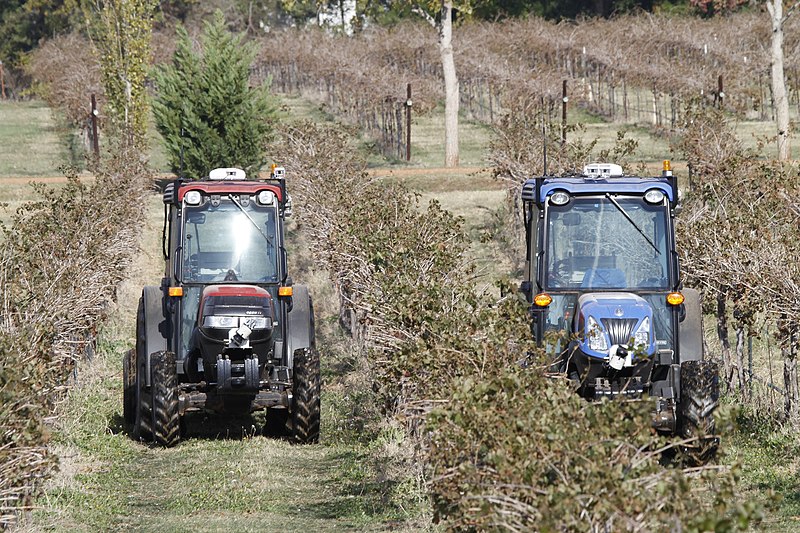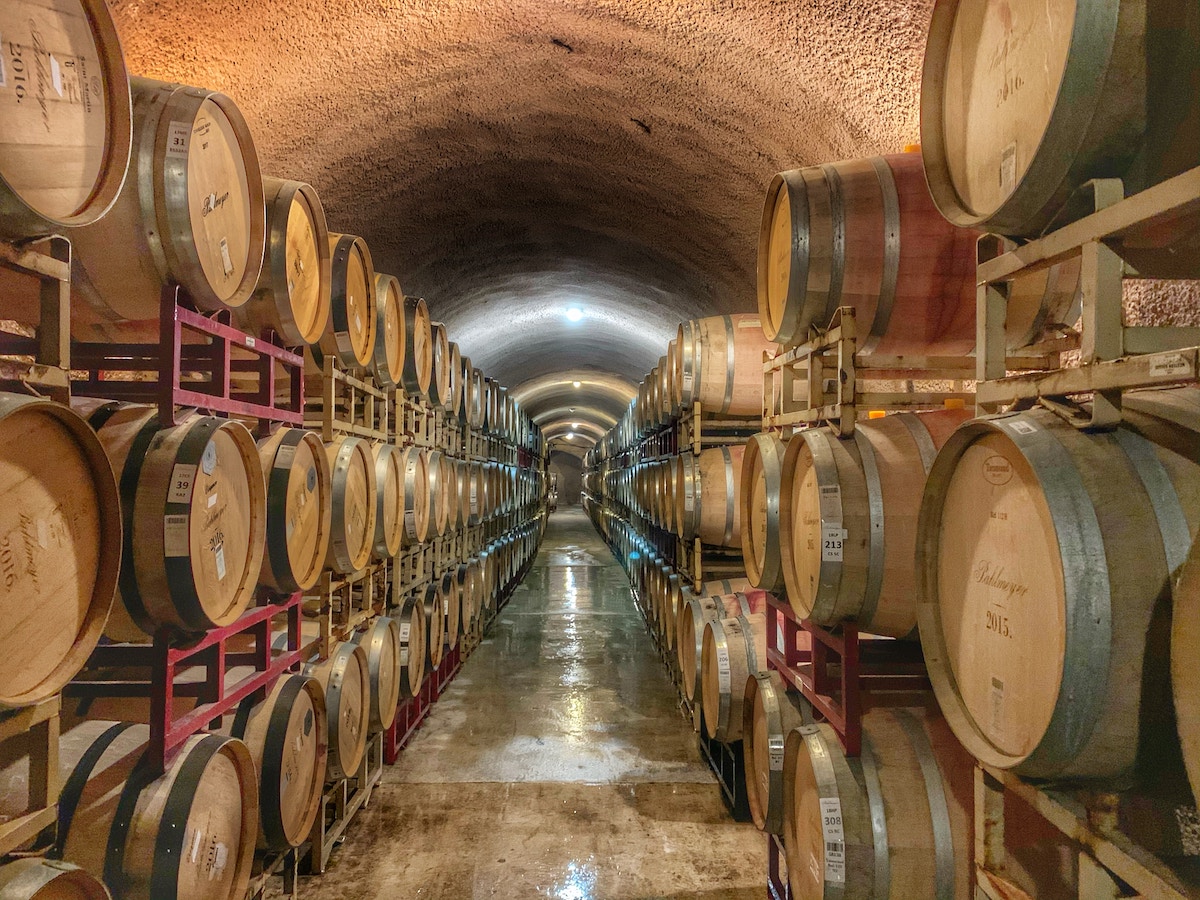
The Rise of Bubbles in the Lone Star State
Texas may not be the first place that comes to mind when thinking about sparkling wine, but the Lone Star State is making a name for itself in the world of bubbles. With a growing number of wineries producing high-quality sparkling wines, Texas is quickly becoming a destination for wine lovers looking to try something new.
Although Texas has a long history of winemaking, it wasn’t until recently that the state began to focus on producing sparkling wine. Today, there are more than 50 wineries in Texas producing sparkling wines, with many of them winning awards and gaining recognition from wine critics and enthusiasts alike. From traditional method sparkling wines made with Chardonnay and Pinot Noir grapes to unique blends featuring lesser-known varietals, there is no shortage of options for those looking to explore the world of Texas sparkling wine.
Despite the challenges posed by the hot Texas climate, winemakers have found ways to produce sparkling wines that rival those from more established regions. By carefully selecting grapes, using innovative production techniques, and taking advantage of the unique terroir of the state, Texas winemakers are proving that they have what it takes to compete on the global stage. Whether you’re a seasoned wine drinker or a curious newcomer, Texas sparkling wine is definitely worth a try.
History of Sparkling Wine in Texas
Texas has a long history of winemaking, dating back to the 1650s when Spanish missionaries first planted grapevines in the region. However, it wasn’t until the 1970s that the modern wine industry began to take shape, with the establishment of the first commercial wineries in the state.
The production of sparkling wine in Texas is a relatively recent development, with most wineries focusing on still wines for the majority of their history. However, in recent years, there has been a surge of interest in sparkling wine, both from winemakers and consumers.
The history of sparkling wine in Texas can be traced back to the early 1990s, when a handful of wineries began experimenting with the méthode champenoise, the traditional method used to produce Champagne in France. This method involves a secondary fermentation in the bottle, which creates the bubbles that are characteristic of sparkling wine.
While the early attempts at sparkling wine were met with mixed success, winemakers in Texas continued to refine their techniques and improve the quality of their wines. Today, there are a growing number of wineries in the state that are producing world-class sparkling wines using the méthode champenoise.
Despite the challenges of producing sparkling wine in a hot, arid climate like Texas, winemakers in the state have embraced the challenge and are producing wines that are gaining recognition and acclaim both nationally and internationally. With its unique terroir and pioneering spirit, Texas is poised to become a major player in the world of sparkling wine.
The Rise of Texas Sparkling Wines
Texas has long been known for its award-winning red, white, and rose wines, but in recent years, the state has also made great strides in producing high-quality sparkling wines. The growth of Texas sparkling wines has been impressive, and the Lone Star State now boasts several notable brands.
One of the reasons for the growth in Texas sparkling wines is the state’s unique climate and terroir. The hot and dry climate, combined with the limestone-rich soil, creates ideal conditions for growing grapes that are well-suited for sparkling wine production. Additionally, Texas has a diverse range of grape varieties, allowing winemakers to experiment with different blends and styles.
Several Texas wineries have turned their attention to sparkling wine production, and the results have been impressive. Some of the most notable Texas sparkling wine brands include:
- McPherson Cellars: Known for its award-winning red wines, McPherson Cellars has also made a name for itself in the sparkling wine category. Its sparkling wine is made using the traditional method and is crafted from a blend of Texas-grown grapes.
- Bending Branch Winery: Bending Branch Winery is another Texas winery that has made a name for itself in the sparkling wine category. Its “Branch Texas Bubbles” is a blend of Chenin Blanc and Muscat Canelli and is made using the Charmat method.
- William Chris Vineyards: William Chris Vineyards is known for its high-quality Texas wines, and its sparkling wine is no exception. Made using the traditional method, the William Chris Vineyards sparkling wine is a blend of Blanc du Bois and Muscat Canelli grapes.
The rise of Texas sparkling wines has also been fueled by the growing interest in sparkling wines across the United States. According to a recent report, sparkling wine sales in the US have been steadily increasing, with consumers showing a preference for domestic sparkling wines over imported ones.
Overall, the growth of Texas sparkling wines has been impressive, and the state’s wineries are continuing to experiment with new blends and styles. With its unique climate and terroir, Texas is well-positioned to become a major player in the sparkling wine market.
Key Producers of Texas Sparkling Wines
Texas is quickly becoming known for its sparkling wines, with several wineries producing high-quality bubbles that can compete with some of the best in the world. Here are some of the key producers of Texas sparkling wines:
- Messina Hof: This family-owned winery has been producing wine in Texas since the late 1970s and has recently added sparkling wines to their portfolio. Their Brut Sparkling Rosé, made with Chenin Blanc and Pinot Noir, is a standout.
- William Chris Vineyards: This boutique winery in the Texas Hill Country focuses on small-batch, handcrafted wines. Their sparkling wine, made with 100% Blanc du Bois grapes, is crisp and refreshing.
- McPherson Cellars: Located in Lubbock, McPherson Cellars is known for its award-winning Rhône-style wines. Their sparkling wine, made with Chenin Blanc and Chardonnay, is a delicious and affordable option.
- Farmhouse Vineyards: This small, family-owned winery in the Texas High Plains produces a range of wines, including a sparkling rosé made with Mourvèdre grapes.
- Landon Winery: With locations in McKinney, Greenville, and Wylie, Landon Winery produces a variety of wines, including a sparkling wine made with Chardonnay and Pinot Noir grapes.
- Grape Creek Vineyard: Located in the Texas Hill Country, Grape Creek Vineyard produces a range of wines, including a sparkling wine made with Chardonnay grapes.
- Heath Sparkling: This winery in the Texas Hill Country specializes in sparkling wines, including a Brut made with Chardonnay grapes and a Rosé made with Pinot Noir grapes.
- Spicewood Vineyards: This winery in the Texas Hill Country produces a range of wines, including a sparkling wine made with Blanc du Bois grapes.
These are just a few of the many Texas wineries producing high-quality sparkling wines. With its unique terroir and innovative winemakers, Texas is sure to continue to be a rising star in the world of sparkling wine.

Varieties and Winemaking Techniques
Texas is home to a wide range of grape varieties that are used to produce sparkling wines. Some of the most commonly used grape varieties include Chardonnay, Blanc du Bois, Pinot Noir, Chenin Blanc, Viognier, Trebbiano, Roussanne, and Marsanne. These grapes are used to produce sparkling wines using a variety of winemaking techniques.
One of the most popular methods used to produce sparkling wine in Texas is the traditional method, also known as the méthode champenoise. This method involves a secondary fermentation that takes place in the bottle, which gives the wine its signature bubbles. During this process, yeast and sugar are added to the still wine, which causes a second fermentation to occur. As the yeast consumes the sugar, it produces carbon dioxide, which creates the bubbles in the wine.
Another popular winemaking technique used to produce sparkling wine in Texas is the Charmat method. This method involves a secondary fermentation that takes place in large tanks instead of in the bottle. The wine is then bottled under pressure to retain its bubbles. This method is often used to produce less expensive sparkling wines and is commonly used to produce Pétillant Naturel and Lambrusco-style sparkling wines.
Grape varieties used to produce sparkling wines in Texas vary greatly. Blanc de Blancs is a popular style of sparkling wine made entirely from white grapes, typically Chardonnay. Pinot Noir and Pinot Meunier are often used to produce rosé sparkling wines. Muscat and Chenin Blanc are used to produce sweeter sparkling wines. Trebbiano is a popular grape variety used to produce sparkling wines in Italy and is also used in Texas.
Overall, winemakers in Texas are experimenting with a variety of grape varieties and winemaking techniques to produce unique and high-quality sparkling wines. Whether using the traditional method or the Charmat method, Texas winemakers are producing sparkling wines that are gaining recognition both locally and internationally.
Taste Profile and Pairing Suggestions
Texas sparkling wines are known for their refreshing acidity and bright fruit flavors. They are typically made using the traditional method, which involves a second fermentation in the bottle, resulting in tiny bubbles that dance on the tongue.
When it comes to sweetness, Texas sparkling wines range from bone-dry Brut Nature to slightly sweet Extra Dry. The sweetness level is determined by the amount of dosage added after disgorgement. As a general rule, the drier the wine, the better it pairs with food.
For those who prefer a sweeter wine, a demi-sec or doux sparkling wine would be a great choice. These wines have a higher dosage, making them perfect for pairing with desserts or spicy foods.
When it comes to food pairings, Texas sparkling wines are incredibly versatile. They pair well with everything from fried chicken to smoked brisket. The acidity of the wine cuts through the richness of the meat, while the bubbles cleanse the palate between bites.
For a classic pairing, try a Brut Nature or Extra Brut with a charcuterie board. The salty, savory flavors of the cured meats are balanced by the crisp acidity of the wine. For a more substantial pairing, a sparkling rosé would be a great choice with grilled chicken or ham.
Overall, Texas sparkling wines are a fantastic choice for any occasion. Whether you’re celebrating a special occasion or just enjoying a meal with friends, there’s a Texas sparkling wine that will pair perfectly with your food.
Comparison with Other Sparkling Wines
When it comes to sparkling wines, France’s Champagne region is often considered the gold standard. However, Texas sparkling wines are quickly gaining recognition for their unique flavor profiles and high quality.
In the United States, California is well-known for its sparkling wines, particularly those made in the traditional Champagne method. However, Texas sparkling wines offer a distinct taste that sets them apart from their California counterparts.
Italy’s Asti and Prosecco regions are famous for their sparkling wines, with Prosecco being a popular choice for its affordability. While Texas sparkling wines may not be as widely available as Prosecco, they offer a unique taste that is worth seeking out.
Washington State is another region in the United States that produces sparkling wines. While their wines are highly regarded, they have not yet gained the same recognition as Texas sparkling wines.
Spain and Mexico are also known for their sparkling wines, with Cava and Mexican Champagne being popular choices. However, Texas sparkling wines offer a unique taste that is different from these traditional options.
In addition to France’s Champagne region, French Champagne is another popular choice for sparkling wine. While Texas sparkling wines may not have the same level of prestige as French Champagne, they offer a high quality alternative that is worth trying.
Other types of sparkling wines, such as Spumante, Franciacorta, and Moscato d’Asti, are also popular in various regions of Italy. While Texas sparkling wines may not be as well-known as these options, they offer a unique taste that is worth exploring.
Finally, other regions in the United States, such as Florida, New York, Virginia, Oregon, and New Mexico, are also producing sparkling wines. While these wines may be gaining recognition, Texas sparkling wines offer a distinct taste that sets them apart from other American sparkling wines.
Overall, while Texas sparkling wines may not have the same level of recognition as some of the more traditional sparkling wine regions, they offer a unique taste that is worth exploring.
The Future of Texas Sparkling Wines
Texas sparkling wine is on the rise, and the future looks bright. As the state’s wine industry continues to grow, more winemakers are experimenting with sparkling wine production. This growth is fueled by a growing interest in sparkling wines, both in Texas and across the United States.
According to a recent report, the sparkling wine market in the United States is expected to grow by 8.5% between 2020 and 2025. This growth presents a significant opportunity for Texas winemakers to expand their production of sparkling wines, including Texas rosé sparkling wine.
As winemakers experiment with different grape varieties and production methods, the quality of Texas sparkling wine is sure to improve. This experimentation will also lead to the development of alternative sparkling wine styles, such as pét-nats and méthode ancestrale.
In addition to experimentation, the growth of Texas sparkling wine will also be driven by increased investment in the state’s wine industry. This investment will help winemakers to expand their production facilities and improve the quality of their wines.
Overall, the future of Texas sparkling wine looks bright. With continued growth and experimentation, the state’s winemakers are sure to produce some exciting and innovative sparkling wines in the years to come.



